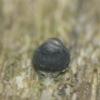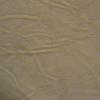
05-02-2013 12:28
Bonjour,On m'a légué ce pyréno venant sur bois

01-03-2013 20:08
Dear friendsCan you help me with this article? STU

27-02-2013 20:55
 Miguel Ángel Ribes
Miguel Ángel Ribes
Good eveningI have this species from Parador de Ma

16-02-2013 12:52
Nina FilippovaGood day,there is another specimen which goes unde

27-02-2013 15:01
Hello, I have a question about the relationship be

28-02-2013 09:07
Nina FilippovaGood day.This species quite often met at dead twig
Pyréno à spores filiformes
Alain GARDIENNET,
05-02-2013 12:28
On m'a légué ce pyréno venant sur bois mort.
J'ai cherché vainement dans les Pleosporales et les Melanommatales (il me faisait penser à un Ostropella).
La fente ostiolaire est courbe ou sigmoïde. La taille de ces ascomes est proche du mm.
Les asques bituniqués mesurent 400-500 x 7,5 µm. Les ascospores sont hyalines (jaunâtres ?) de même longueur multiseptées régulièrement.
Si cela peut inspirer quelqu'un, ce ne serait pas de refus.
Alain
Alain GARDIENNET,
05-02-2013 22:36
Re : Pyréno à spores filiformes
Nobody ?
Yannick Mourgues,
06-02-2013 18:43

Re : Pyréno à spores filiformes
Tu as une image des spores ?
Ibai Olariaga Ibarguren,
01-03-2013 22:28
Re : Pyréno à spores filiformes
Hi Alain,
Just an idea. Have you checked Lophionema vermisporum?
Cheers,
Ibai.
Alain GARDIENNET,
01-03-2013 23:56
Björn Wergen,
02-03-2013 05:32

Re : Pyréno à spores filiformes
Hi Alain,
this one reminds me on Ostropa barbara. Can you show us a cut through the "perithecia"?
regards,
björn
this one reminds me on Ostropa barbara. Can you show us a cut through the "perithecia"?
regards,
björn
Alain GARDIENNET,
02-03-2013 08:09
Re : Pyréno à spores filiformes
Yes it is, you're very good Björn !
I just compare with the data of Enrique.
The same, surely.
Thanks to all of you, especially Björn.
Alain
I just compare with the data of Enrique.
The same, surely.
Thanks to all of you, especially Björn.
Alain
Alain GARDIENNET,
02-03-2013 21:28
Re : Pyréno à spores filiformes
I knew this taxa, under the name O. cinerea.
It's the same.
My first idea (= Ostropella albocincta), was not so bad.
Alain




